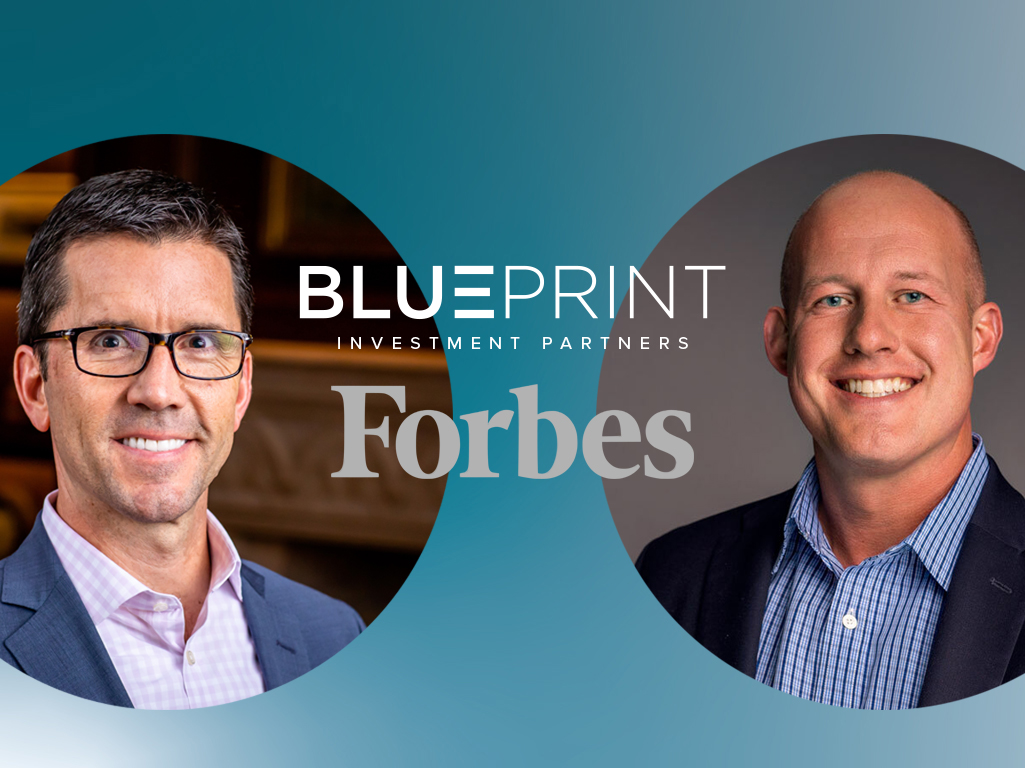Forbes Interview Highlights Blueprint’s Systematic Investing Process
November 12, 2018

Blueprint Investment Partners, an asset manager and pioneer in the creation of systematic, process-driven, and transparent investment strategies for financial advisors, was featured in a Forbes Q&A. The interview between Forbes contributor Peter Hans, Blueprint CEO & Co-Founder Jon Robinson, and Blueprint Partner Tommy Mayes addresses a variety of topics, including systematic investing, risk management, emotional intelligence, and how trend following can be an alternative to liquid alternatives.
Below are some excerpts from the full interview.
Blueprint’s Systematic Investing Philosophy
Hans: “Can you break down your core investment philosophy for me?”
Robinson: “Our philosophy is summed up in four key tenets. First, is a focus on asset prices rather than making predictions. We believe there is tremendous latent value in that single data point. We like to say that price represents the transformation of “could” into “did”. What better indication is there of what a market is going to do, both good and bad, besides what it’s doing? And what other factor matters more to our clients and their account values? Second, we believe in the importance of preserving compounding by avoiding large losses. We like to make more by first losing less. Third, we think emotions generally have detrimental effects on an investment strategy and, therefore, seek to mitigate this.
One of the major benefits of a systematic process is the ability to counter the results that emotional investing and behavioral biases can have. Fourth, we believe successful advisors (our clients) focus on the needs of their clients rather than market research. With declining investment costs and the rise of indexing and robos, advisors cannot compete on investment performance alone. However, they maintain their edge in the human element and thus should focus their time accordingly.”
Risk Management & Downside Protection
Robinson: “In many respects, we owe our success to the financial crisis; our ability to do well during that period was a major catalyst in uncovering the value of downside protection and systematic asset management.”
Hans: “So at a high level, how do you go about executing a strategy [that is cost-effective, tax-friendly, offers favorable characteristics, and is non-correlated]?”
Robinson: “We believe the three greatest risks to investors are behavior biases, the loss of compounding from large losses, and the opportunity cost of being too conservative. As numerous studies show, the average investor underperforms the market by aggressively buying at the highs and selling at the lows. Our process slowly reduces exposure in the early stages of bear markets and steadily increases before bull markets pick up steam. These actions solve for all three of those risks by having a calming effect on clients, reducing drawdowns, and capturing favorable return environments.”
Trend Following as an Alternative to Liquid Alternatives
Hans: “More broadly, what secular trends do you see as having the most profound impact on investors in the next 10 years? How do you think investors can position themselves accordingly?”
Mayes: “We think systematic strategies can serve as a core component of investment portfolios to combat what we call the “60/40 Problem” or can be an Alternative to Liquid Alts. As we talked about earlier, investors need access to high efficacy alternatives but are becoming much more sensitive to cost and transparency. Technology, low trading costs, and risk management have provided by a disciplined approach to our models will meet this trend towards systematic investment management head-on.”
Hans: “Building upon investor education, how do you respond to questions or pushback surrounding the underperformance of alternatives and liquid alts – at least when benchmarked against the S&P?”
Robinson: “To be fair, anything that was underweight the FAANGs over the last few years suffered on a relative basis. So that story is not unique to liquid alts. What is unique, however, is that the use of alternatives has historically meant a black box investment process and enormous fees. We believe those days are over because it creates friction for investors; they—justifiably—don’t understand the underpinnings of the investments, the investments themselves are expensive and, yet, they’re underperforming Google—really, what could go wrong?!
So, yes, this recipe can distort how people view alternatives during a top-heavy bull market. Still, it’s important to recognize that alternatives are designed to deliver uncorrelated returns. It is our view that when investors begin seeking more portfolio diversification via non-traditional asset classes, their preference and selection criteria will be very different than in the past. To date, only a very small percentage of investors have had the benefit of alternatives due to limited access and excessive complexity. We offer strategies that are liquid, cost-effective and tax sensitive. In essence, we believe this delivers the benefits of alternatives without the costs and complexities.”
About Blueprint Investment Partners
Blueprint Investment Partners is an asset manager and pioneer in the creation of systematic, process-driven, and transparent investment strategies for financial advisors and institutions. The firm was founded on a management philosophy honed by its co-founders during the 2008 financial crisis. Blueprint Investment Partners applies a rules-based approach to both asset class and time diversification, instilling discipline and removing human bias during emotionally charged market environments. The firm offers a suite of distinct global investment portfolios that are distinguished by their risk tolerance, with the models delivered as separately managed account strategies.
